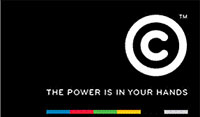
Top stories






More news












And, indeed, it is as users of social network Twitter launched an initiative to document sightings of torn-out Cell C adverts.
Vanessa Berger tweeted that "i never want to hear trevor noah's voice again.can't escape it: tv ads, my cell c voicemail and now magazine ads! what's next honestly" while marketing blog Cherryflava tweeted, "Just received a magazine that has Trevor Noah audibly shouting about Cell C.Never felt like killing a magazine before." Justin Zawyrucha wrote, "My missus ripped it out of 3 mags in bouts of fury, then stomped on device to ensure it never squawked again."
Others have tweeted about ads torn out in the dentists waiting room, annoyed airplane passengers enduring Noah in a confined space with no (safe) exit, people ripping out ads in restaurants and even torn-out Cell C ads left in the lifts of buildings. It prompted one Tweep to ask whether Cell C might fast becoming South Africa's most-hated brand.
This could not be the reaction Associated Magazines, Cell C or its ad agency Ogilvy Johannesburg could have envisioned.
At first glance
At first glance, the idea seems like a win-win for all parties. Cell-C creates an ad that engages its target market, it positions the brand as innovative and pushing the boundaries, and, hey, it's the world of Web 2.0 with all its interactivity and 'conversations' so why not translate this print media?
In the media release on the ad, Cell C marketing executive Mandy Waddington even talks about the "convergence of the digital channels into the print environment". Associated, meanwhile, gets to show advertisers it is willing to stick its necks out and make some good money along the way.
In reality, the talking magazine ad simply underscores the single dimension that is magazines. There is nothing interactive or conversational (ie two-way) about a print ad that talks. It's also nothing new, in spite of Associated's claim that it is introducing "new technology to the print medium". A quick search on the Internet reveals that Twix did it in Rolling Stone in 1995, the British Radio Advertising Bureau did it in a trade title in 1996, while Absolut did it in Vanity Fair as long ago as December 1989.
The real question nobody seems to have asked is why this hasn't ever taken off in a big way? There might be a reason talking magazine ads haven't really caught on.
Invasive
They are invasive in a medium whose lack of invasiveness remains one of its strongest selling points. They are also irritating as those Tweets so clearly indicate. It's great fun for three-year-olds; for everybody else trying to escape the daily grind in the peace and familiarity of a good magazine read, less so. [And what about recycling? - managing eg]
Vanessa Raphaely, editor of Cosmopolitan, maintains she is happy with the ad. "We would certainly do it all over again," says Raphaely. "What else is creating buzz right now? The ad is new, fresh, bold and attention-grabbing. It cuts right through the clutter. For all the haters (and bloggers sometimes must stir things up to drive traffic) there have been far more positive responses. (I can send you the Twitter streams, if you like.) We're happy."
"The advert has caused a wonderful buzz for Cell C, and has got readers talking about the ad as well as Cell C's technology," says Jaco-Louis Groenewald, PR manager at Associated Magazines. "Most of the feedback we received thus far was positive and we will definitely look at doing a campaign like this again. Our strategy is to continually innovate and integrate new technology into our products, allowing for multimedia campaigns for our advertisers."
Not all the online feedback have been negative. Andrew Louw got to use the Cell C ad's batteries to power an old Donkey Kong game from the early '90s. Claudia Dantas tweets "cell c ad in cosmo is amazing. Wow. Well done cell c. Lol. Gets annoying when ur trying to flip the pages but still genius I think."
Annoying seems to sum up the campaign
Cool (the first time you open up the magazine) but annoying seems to just about sum up the campaign, which is designed to fit in with Cell-C's drive to "consumer centricity", engagement and ambitions at two-way marketing communication.
Personally, I think it's all part of a master communication strategy designed to roll out phase two of Cell C's brand repositioning - taking it from apologetic to annoying in one giant leap forward - in a bid to boost, well, something. Don't be surprised if a full page ad shortly appears in the Sunday press. It will start:
Dear South African Cellphone User... Several media are insinuating that talking magazines ads are downright annoying and that we are becoming South Africa's most annoying brand and that Trevor Noah is possibly the most over-exposed (and annoying) brand spokesperson in the country.
We'll be terminating their calls shortly.
Annoyingly but no longer apologetically yours,
Lars
